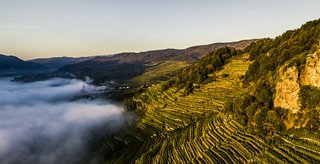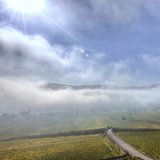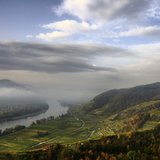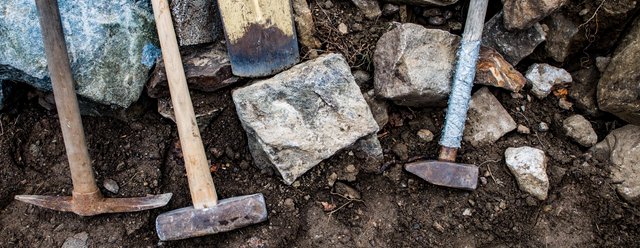![[Translate to Englisch:] Ried Zanzl - (c) Robert Herbst](/fileadmin/_processed_/2/b/csm_Ried_Zanzl_herbst-0729_83beef1476.jpg)
The first mentioning of the Wachau was in a Carolingian document in 830 A.D. While the tradition of wine-growing here actually dates back to the time when the Romans had settled in the Wachau, the first golden age of wine actually blossomed under Carolingians rule. In the Middle Ages, Wachau wine was already known far beyond the borders of Austria. There are not many landscapes in Europe that have such clearly defined borders as the Wachau: the Danube valley between Melk and Krems. The Wachau´s history was formed here, along 33 kilometers of river, wine and cultural landscape between the majestic Benedictine monasteries of Melk and Göttweig.
Climate
Numerous contrasts abound in this confined space – a unique wine-growing area of rare beauty – which is differentiated from all other vine culture lands in Europe by its land formations and subtle microclimate.
The Pannonian climate zone extends like a tongue from the east into the Wachau. From the heights of the Dunkelsteiner forest south of the Danube river, and the Waldviertel in the north, cool and wet air masses that are rich in oxygen flow down through little, forested stone valleys known as the Wachauer Gräben. This creates a continuous circulation of air, which strongly influences the aromas forming in the grapes and - together with the meagre primary rock soils - characterises the pressed wine.



Geology and Soil
Along with the climate, the soils are the “second” mystery of the Wachau. Weathered primary rock soils (gneiss, silicate and rock brown earth) enrich the mountain terraces; lower down, they are covered partly with islands of loess that evolve into light, sandy soils. The vines thrive on the terraces that reach up to around 450 meters above sea level – this is 250 meters above the Danube river. With their extremely modest fruit yield per vine, the mountain sites add to the fame of Wachau wines all over the world, because they bring together what is so difficult to reach anywhere in the world: special charm; taste intensity, and clear grape aromas.


